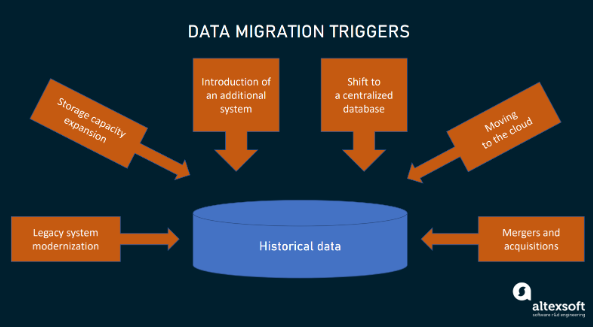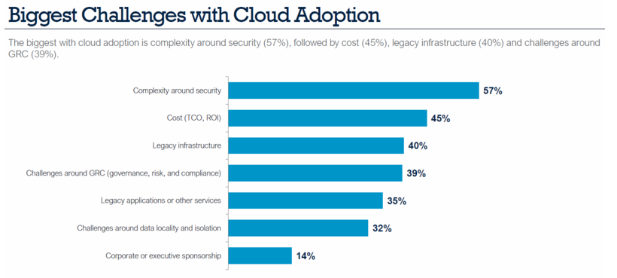
Data migration is essential for organizations as they move their data to the cloud. It can be a complex process, but with the right strategy, it can be done securely. In this blog post, we’ll look at data migration, its benefits, challenges, and how to reduce its risks. We’ll also look at what to look for in a cloud security provider, as well as STL Digital’s approach to cloud security.
What is data migration?
It is transferring data from one system or environment to another. This could be from one database to another, from one storage medium to another, or from an on-premises system to the cloud. Data migration aims to ensure that the data remains secure and accessible during the transition.
Data migration can be a complex process, as it involves transferring large amounts of data from one system to another. It’s vital to ensure that the data is transferred accurately and securely, as any errors or security breaches can significantly impact the organization.
Benefits of data migration
Data migration can offer organizations several benefits. The most obvious benefit is that it allows organizations to move their data to the cloud, which provides scalability and cost savings. Additionally, data migration can make accessing and managing data easier and improve security.
Organizations can take advantage of cloud-based technologies such as artificial intelligence and machine learning by moving data to the cloud. This can help them make more informed decisions and gain insights from their data. Additionally, cloud-based services can provide organizations with access to various tools and services that can help them manage and process their data more efficiently.
Challenges of data migration
Data migration can also present some challenges. One of the most common challenges is ensuring that the data is moved securely and accurately. Data migration involves transferring large amounts of data, which can be time-consuming and complex. Additionally, there is always a risk that data may be lost or corrupted during the migration process.
Another challenge is ensuring the data is accessible and secure in the cloud. Organizations need to ensure that their data is protected from unauthorized access and that they have the necessary tools and processes to maintain data security.

How to reduce the risks of data migration?
To reduce the risks associated with data migration, organizations must ensure that they have the right processes and tools. This includes having a comprehensive data migration plan outlining the steps needed to ensure a secure and successful migration.
Organisations should also ensure that their data is encrypted during the migration process and that the data is stored securely in the cloud. Additionally, organizations should have the tools and processes to monitor their data’s security in the cloud.
To reduce the risks of data migration, it is crucial to have a well-planned and thorough strategy in place. This should include the following:
- Conducting a thorough analysis of the current data and systems to ensure a complete understanding of the data that needs to be migrated and to identify any potential issues that may arise during the migration process.
- Creating a detailed plan that outlines the steps to be taken during the migration, including timelines and milestones, and identifying any dependencies that may impact the migration process.
- Testing the migration process thoroughly before implementing it, ensuring that all data is accurately and completely migrated, and identifying and resolving any issues that may arise.
- Having a rollback plan in place in case any issues arise during the migration process that cannot be resolved.
- Have a solid data backup and recovery plan in place in case data is lost or corrupted during the migration process.
- Ensure you have the right tools and resources to conduct the migration and that your team is adequately trained to use them.
- Continuously monitoring the migrated data and systems to ensure that they are operating as expected and that data integrity is maintained.
- Try to use a tool that would automate the migration process, keep track of each step, and compare the source and target data.
- Finally, communication and collaboration between the teams involved in the migration process are crucial to ensuring that everyone is on the same page and that any issues are identified and resolved quickly.
What to look for in a cloud security provider
When selecting a cloud security provider, organizations must ensure that they choose a provider that offers comprehensive security solutions. Organizations should look for providers that provide a range of security services, such as data encryption, authentication, access control, and monitoring.
Organizations should also ensure that the provider has a robust support system. This includes having a team of experts who can provide advice and guidance on ensuring the security of the organization’s data in the cloud.
What is STL Digital’s approach to cloud security?
STL Digital is committed to providing our clients with the highest level of security. They offer various security services, including encrypting data during migration, access control, authentication, and monitoring. They provide clients with the tools and processes to ensure their data security in the cloud.
STL’s team of experts is also available to provide advice and guidance on ensuring the security of the organization’s data in the cloud.
Conclusion
Data migration can be complex, but it can be done securely with the right strategy. Organizations need the right techniques and tools to ensure their data security in the cloud. Organizations should also select a cloud security provider that offers comprehensive security solutions.
At STL Digital, we are committed to providing our clients with the highest level of security. We offer a range of security services, and our team of experts is available to provide advice and guidance on ensuring the safety of the organization’s data in the cloud. To learn more about our approach to cloud security, contact us today.


